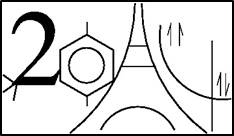The complete description of the conformational behaviour of sugars involves assessing exocyclic dihedral angles and ring conformations, both in terms of static conformations and dynamic behaviour within these limiting conformers. We have focused here on the conformation of the tetrahydrofuran ring and its deviation from planarity. Beyond the well-known pseudo-rotational analysis based on two parameters, puckering angle and amplitude, we present a complementary and new approach to describe ring conformational dynamics.
Principal Component Analysis (PCA) of the endocyclic dihedral angles proves to be an efficient method to describe collective, global motions of the carbohydrate ring, with two or three principal components containing the largest mean-square fluctuation. We have developed here a new representation system we called RdPCA to characterize ring flexibility based on the choice of the most energetically relevant axes, with none of the assumptions underlying the Altona model. This RdPCA model also gave indications on the kinetic behaviour of such systems suggesting possible energy pathways for ring motions on the energy landscape.
- Image

 PDF version
PDF version

